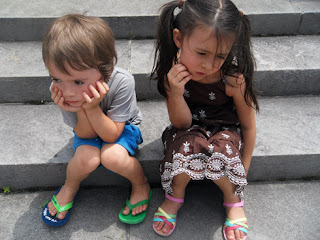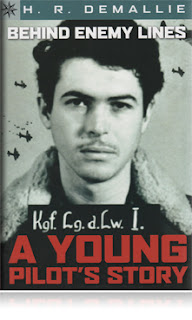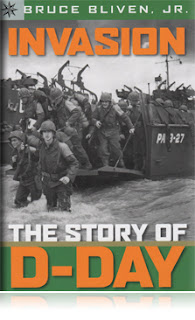This post is a bit off track from our usual topics of education and learning, but I thought it was worth sharing a wonderful article by Frank Bruni that I think many of you will find relatable. I highly recommend the article while understanding that my experience is not universal. This is not intended to offend or hurt anyone who does not have siblings or anyone whose relationships with their siblings are a source of hurt. But for those of you who are raising a brood of children, be encouraged that you are giving your children the opportunity to develop relationships that will mean the world to them.
Among home schooling families there is a tendency for family size to be on the larger side of average. Many of the families I knew growing up in our home school coop had three, four, five, or six children. Being the oldest of six, I did not really give a lot of thought to the size of my family herd. Yet, as I have grown older, I have come to realize that having five siblings is decidedly not "normal" and that realization has caused me to grow to appreciate my siblings in ways I never have before. And this happened to coincide with a shift in the relationships I share with my siblings. Over the past couple of years, I've witnessed a sort of tightening of the sibling circle. As my siblings and I settle more and more into our adult lives the bonds between us have strengthened. Maybe its celebrating one another's weddings. Maybe it's the addition of two adorable nephews. Maybe it's the fact that we're becoming more comfortable with who we are individually. Whatever it is, I'm intensely grateful for my three sisters and two brothers. So when I came across this article, I was thrilled to read about the experiences of another group of siblings.
Frank Bruni, in his excellent column entitled "The Gift of Siblings", speaks about his relationships with his three siblings and celebrates the strength and meaning he draws from those friendships. In so many ways he was able to articulate something that I have been pondering and several points he made stood out to me.
"We marched (or, rather, crawled and toddled) into this crazy world together, and though we had no say in that, it’s by our own volition and determination that we march together still. Among my many blessings, this is the one I’d put at the top." I could not agree more. One of the greatest blessings in my life is my friendships with my brothers and sisters. We've formed strong bonds through years of playing together, working in the BFB barn packing up boxes of books together, traveling together, making it a priority to spend time together. As Bruni states, "I’m convinced that family closeness isn’t a happy accident, a fortuitously smooth blend of personalities...It's a resolve, a priority made and obeyed." One of my siblings is especially good about making time with family a priority. My brother Solomon flew over to Scotland twice (in the dead of winter!) to visit me while I was living there. He's the first to book a ticket to visit his nephews. And his commitment has influenced all of us to seek out times when we can be together.
With a twenty-year age gap between the oldest and youngest in my family we have been navigating a shift in relationship from childhood playmates to adult friends and confidants. It's not always smooth and there have definitely been hurts and misunderstandings, but I found that Bruni explains one of the benefits of having multiple siblings so well: "I’m also convinced that having numerous siblings helps. If you’re let down by one, you can let off steam with another." This ability to reduce the pressure helps ensure that hurts don't simmer and build over time, leading to estrangement and broken relationships. There is an unspoken recognition that no matter what one sibling tells me about another, it will not change the way I feel about the offending party. That sort of trust is hard to come by and is formed over years and years of interactions and cultivating a practice of giving one another the benefit of the doubt.
Bruni also states, "With siblings to help shoulder the burden of your parents’ dreams and expectations, you can flail on a particular front with lower stakes and maybe even less notice. Siblings not only pick up the slack but also act as decoys, providing crucial distraction." I love this point! Helicopter parenting is not possible in large families. There is a certain benign neglect that happens in big families and I know that I benefitted from the fact that my parents' attention was not solely focused on me. There was a little more room to make mistakes and we definitely got away with more than we would have if there had been fewer of us. And when we were caught, we bore the punishments together.
Among home schooling families there is a tendency for family size to be on the larger side of average. Many of the families I knew growing up in our home school coop had three, four, five, or six children. Being the oldest of six, I did not really give a lot of thought to the size of my family herd. Yet, as I have grown older, I have come to realize that having five siblings is decidedly not "normal" and that realization has caused me to grow to appreciate my siblings in ways I never have before. And this happened to coincide with a shift in the relationships I share with my siblings. Over the past couple of years, I've witnessed a sort of tightening of the sibling circle. As my siblings and I settle more and more into our adult lives the bonds between us have strengthened. Maybe its celebrating one another's weddings. Maybe it's the addition of two adorable nephews. Maybe it's the fact that we're becoming more comfortable with who we are individually. Whatever it is, I'm intensely grateful for my three sisters and two brothers. So when I came across this article, I was thrilled to read about the experiences of another group of siblings.
Frank Bruni, in his excellent column entitled "The Gift of Siblings", speaks about his relationships with his three siblings and celebrates the strength and meaning he draws from those friendships. In so many ways he was able to articulate something that I have been pondering and several points he made stood out to me.
"We marched (or, rather, crawled and toddled) into this crazy world together, and though we had no say in that, it’s by our own volition and determination that we march together still. Among my many blessings, this is the one I’d put at the top." I could not agree more. One of the greatest blessings in my life is my friendships with my brothers and sisters. We've formed strong bonds through years of playing together, working in the BFB barn packing up boxes of books together, traveling together, making it a priority to spend time together. As Bruni states, "I’m convinced that family closeness isn’t a happy accident, a fortuitously smooth blend of personalities...It's a resolve, a priority made and obeyed." One of my siblings is especially good about making time with family a priority. My brother Solomon flew over to Scotland twice (in the dead of winter!) to visit me while I was living there. He's the first to book a ticket to visit his nephews. And his commitment has influenced all of us to seek out times when we can be together.
With a twenty-year age gap between the oldest and youngest in my family we have been navigating a shift in relationship from childhood playmates to adult friends and confidants. It's not always smooth and there have definitely been hurts and misunderstandings, but I found that Bruni explains one of the benefits of having multiple siblings so well: "I’m also convinced that having numerous siblings helps. If you’re let down by one, you can let off steam with another." This ability to reduce the pressure helps ensure that hurts don't simmer and build over time, leading to estrangement and broken relationships. There is an unspoken recognition that no matter what one sibling tells me about another, it will not change the way I feel about the offending party. That sort of trust is hard to come by and is formed over years and years of interactions and cultivating a practice of giving one another the benefit of the doubt.
"For each of us, a new home, a new relationship or a newborn was never quite real until the rest of us had been ushered in to the front row." This rings particularly true for me. As I've moved from home to home and country to country over the past six years my husband and I have come to appreciate the moments when we can share these new places with our families. The first time my dad and brother visited me in Scotland made me feel like my husband and I had truly made a life for ourselves there.
Bruni does remark upon a little thought-of consequence of smaller families: "I sometimes wonder, when it comes to the decline in fertility rates in our country and others, whether the economic impact will be any more significant than the intimate one. For better or worse, fewer people will know the challenges and comforts of a sprawling clan." I remember speaking to a girl from China and asking her about her family. She reminded me that China's one-child policy ensured that she didn't have siblings and it struck me that for the people of my generation in China, most of them will never know what it is like to have a sibling. This young woman assured me that because no one has siblings, they have become very good at creating groups of close-knit friends who fill that void. While I have not experienced this myself, I do know only-children who have cultivated sibling-like relationships with a select few friends or who have been absorbed into a large sibling group. And I am reminded that life has a way of filling in gaps, whether familial or otherwise, and providing us with the companionship we all need. As Psalm 68:6 so beautifully states: "God sets the solitary in families."
And finally, Bruni sums it all up beautifully in this passage: "My siblings have certainly seen me at my worst, and I’ve seen them at theirs. No one has bolted. It’s as if we signed some contract long ago, before we were even aware of what we were getting into, and over time gained the wisdom to see that we hadn’t been duped. We’d been graced: with a center of gravity; with an audience that never averts its gaze and doesn’t stint on applause." I cannot state it any better, I have been graced.
Photo credit: Kori Lynn Photography
Photo credit: Kori Lynn Photography



































































